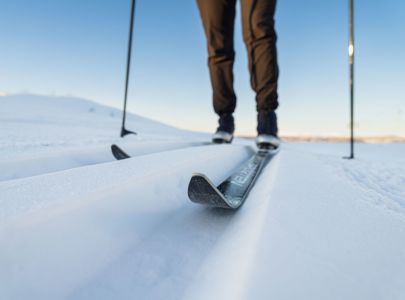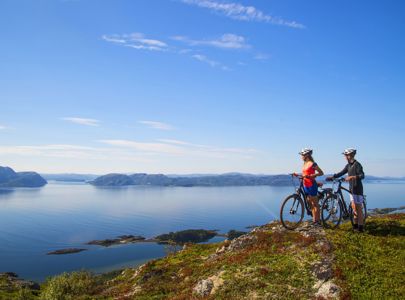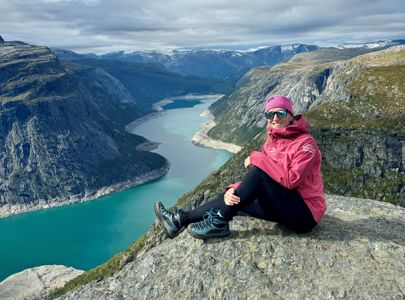Facts about Norway
Seasons and climate
There is a popular saying in Norway: "There is no such thing as bad weather, only bad clothing." This is a country where you should bring your nicest bikini, the warmest woolen sweaters and your coolest wind- and waterproof gear!
...and this goes for all seasons!
Thanks to the temperate waters of the Gulf Stream, Norway has a much warmer and milder climate than other parts of the world at the same latitude, such as Alaska, Greenland, and Siberia. The coldest areas in the winter are often inland or far to the north.
Norway stretches from 57° to 78° north, so the climate varies a lot. There are great variations between north, south, inland and coast.
Winter in Norway is a magical time, with fantastic opportunities for cross-country skiing. However, snow conditions can be unpredictable, and darkness plays a significant role—December and January bring the shortest days of the year, with limited daylight hours. February often has dry snow with days slowly getting longer. In March and April, spring snow conditions begin to settle in, but if it’s cold enough at night, the snow can stay in good condition longer.
During winter, the Northern Lights are a must-see. While the best viewing is typically in Northern Norway, the southern parts has also seen some Northern Lights activity in recent years. For the most spectacular display, though, darkness is crucial, meaning mid-winter or northern regions are your best bet for a magical experience.
Spring brings longer days and increasing temperatures, but hiking in high mountain areas such as is not possible until late June due to remaining snow on the trails. However, May-June is beautiful for hiking in coastal areas, offering a fantastic opportunity to experience nature as it awakens, with waterfalls flowing at their fullest and trees beginning to blossom.
Summer in Norway is a season of long days, with unpredictable weather—it can be sunny one moment, then rain the next. This variability adds to the charm of the season, but it’s important to be prepared for changing conditions.
Autumn is one of the most beautiful seasons in Norway. As the crowds thin out, you’ll find peaceful hiking conditions amidst the stunning autumn foliage. The forests and mountains are painted in shades of red, orange, and yellow, creating a picture-perfect landscape. The air turns crisp, and the cooler temperatures make for great hiking conditions. It’s also a great time for those looking to experience Norway without the high-season crowds, and the weather, while variable, tends to be more stable than in summer.
Summer
Norway's summer climate provides an excellent backdrop for outdoor pursuits such as cycling and hiking. On a good day, the temperature can reach 25-30°C.
Generally, normal summer temperatures in Norway range from 10-25°C. The mountainous regions boast relatively stable weather, while the coastal areas experience more variability.
June, July, and August emerge as the prime months for cycling, with temperatures and conditions aligning perfectly.
July and August stand out as ideal months for invigorating mountain hikes, offering pleasant weather for elevated adventures.
A noteworthy aspect of Norwegian summers is the enchanting phenomenon of bright nights, particularly prominent in Northern Norway in June and July. As August and September approaches, the nights gradually gets darker.
Embrace the Endless Daylight
In the summer months, a remarkable phenomenon awaits you above the Arctic Circle - up to 24 hours of uninterrupted sunlight. This enchanting feature extends your daylight hours, providing an extended window to immerse yourself in the breathtaking sights and uncover new discoveries.
The farther north your journey takes you, the more prolonged the spectacle of the midnight sun becomes, casting its luminous glow and granting you extra moments to relish the beauty that surrounds you. Embrace the extraordinary experience of endless daylight, where time seems to stand still, and the magic of discovery knows no bounds.
Approximate dates when you can see the midnight sun:
The Arctic Circle: 12 June - 1 July
Bodø: 4 June - 8 July
Svolvær: 28 May - 14 July
Tromsø: 20 May - 22 July
Winter
In our ski trips, you'll explore regions with a stable winter climate, where temperatures typically range from 0°C to -15°C (on rare occasions down to -20°C). The mountain climate is dry, and with proper attire, these temperatures are usually manageable. Keep active, and layer up during breaks. The snow is typically dry, creating ideal conditions for skiing.
February: Expect dry, perfect skiing conditions, but brace for shorter days and colder temperatures. Proper dressing is key, and maintaining movement is vital. You'll have about 8 hours of daylight.
March - April: Conditions vary with dry and wet snow. You'll enjoy more daylight hours and often experience sunny weather, with about 10-13 hours of daylight.
Sunglasses and sun protection are essential, especially in high mountain areas where sunlight reflects in the snow, potentially causing serious harm. Even in cloudy weather, wear sunglasses.
In very cold conditions, use sun protection without water and opt for sunscreen with a high solar factor (20 and above). Children, being more sensitive, require extra protection.
Gear up, be mindful of the conditions, and ensure a safe and enjoyable skiing experience.
The Northern light (aurora borealis)
The Northern Lights, or Aurora Borealis, paint the Arctic night sky with ethereal hues. This natural light display is a celestial dance of charged particles from the sun colliding with Earth's magnetic field. Shimmering curtains of green, pink, and violet illuminate the darkness, creating a mesmerizing spectacle. The Northern Lights are best observed north of the Arctic Circle, but have become more common further south in recent years.

The Norwegian Nature Diversity Act
The act has the purpose of protecting biological, geological and landscape diversity and ecological processes through conservation and sustainable use, and in such a way that the environment provides a basis for human activity, culture, health and well-being, now and in the future.
The act allows you to walk wherever you want, as long as nothing else is announced. This gives numerous possibilities for exciting excursions! Private ground and cultivated land, however, should not be trafficked, and…
- Nature must not be damaged!
- Always bring back your litter and never throw rubbish outdoors
- There might be stricter access to protected areas
- Show respect for people and animals
- Open fire is forbidden between the 15th of April and the 15th of September.
The Fjords
Norway has the highest concentration of fjords in the world, and nowhere on earth are there more fjords than in Fjord Norway. Formed when the glaciers retreated and seawater flooded the U-shaped valleys, the fjords have made Norway famous. The Geirangerfjord and the Nærøyfjord feature on the UNESCO World Heritage list. The long Sognefjord and the Hardangerfjord, famed for their cherry and apple trees, are amongst the most visited. But the Lysefjord just outside of Stavanger (home to the famous Preikestolen or Pulpit Rock) and the Nordfjord further north are also very popular holiday destinations. National Geographic Magazine has named the fjords “the best unspoiled travel destinations in the world”. And the respected American newspaper Chicago Tribune has included Norway’s fjords on its list, Seven Wonders of Nature.
Mosquitoes
Mosquitoes are not a big issue in the areas where our tours run. Mosquito repellent is sold in every grocery shop.
National parks
The significance of nature holds a special place in the hearts of the Norwegian people. We understand the delight that comes from scaling mountains, both majestic and modest, savoring moments of serene quietude, and experiencing the awe-inspiring force of untouched landscapes. Norway’s 47 national parks protect our finest areas of natural beauty for enjoyment and protection.
It is important to check what roules that applies in the area you are traveling in.
Bicycling within protected areas is restricted to designated trails and roads, and electric bikes are classified as motorized vehicles, making them ineligible for use in these areas.
Drone flying is strictly prohibited in certain sections of our protected areas. In the remaining regions, restrictions on drone usage may vary based on time and purpose. This precaution is taken to prevent disruptions to wildlife and other individuals within the protected area.
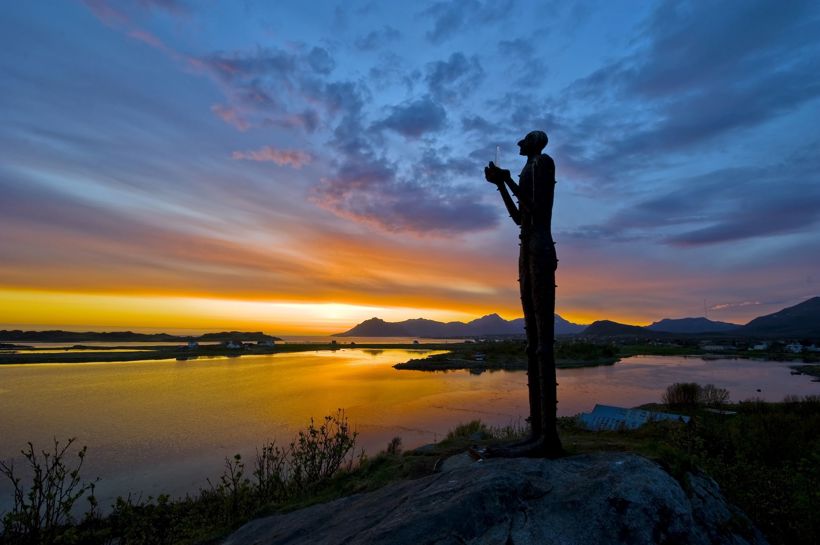
Culture and Etiquette in Norway
Norwegians value personal space, privacy, and punctuality. People may seem reserved at first, but are generally friendly and helpful once approached. Small talk with strangers is not common, but polite greetings and eye contact are appreciated.
When meeting someone, a firm handshake is the standard greeting. Removing your shoes when entering a private home is customary. Being on time is important for both social and business meetings, as well as public transport.
Norwegians appreciate nature and the outdoors, and the “right to roam” (allemannsretten) allows everyone to enjoy the countryside—just remember to show respect for the environment and other people’s property.
Caring for the Environment
Norwegians take environmental responsibility seriously, and visitors are expected to do the same. Recycling is common, and bottles and cans can be returned to stores for a deposit refund (pant). Littering is frowned upon—always dispose of waste in bins or take it with you. When enjoying nature, follow the principle of “leave no trace” by avoiding damage to plants, wildlife, and landscapes. Public transport, cycling, and walking are encouraged as sustainable ways to travel.
Alcohol in Norway
In Norway, alcohol is regulated and sold under strict rules. Beer and cider (up to 4.7% alcohol) can be bought in supermarkets, but only during specific hours and never after 8 p.m. on weekdays or 6 p.m. on Saturdays. Wine, spirits, and stronger drinks are sold exclusively at state-run Vinmonopolet stores, which have limited opening hours. The legal age is 18 for beer and wine, and 20 for spirits.
Smoking in Norway
Smoking is banned in all indoor public places, including restaurants, bars, and public transport. You may smoke outside, but always be considerate and check for designated smoking areas. Tobacco products are kept behind the counter in shops and sold only to those aged 18 or older.
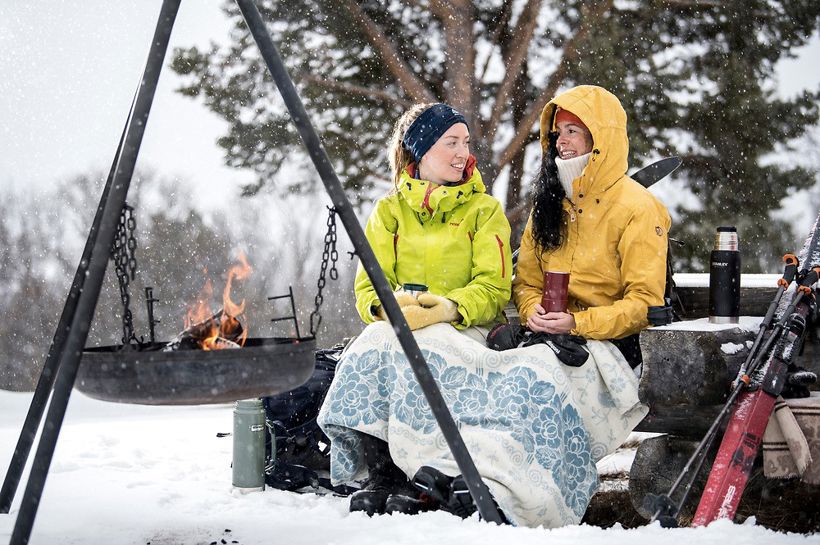
Norwegian kos (cosiness) goes way beyond the Danes’ “hygge”, the Americans’ “perfect moment”, and frenetic society’s “quality time”. Norway's mighty nature and distinct seasons inspire people to get together to create intimate moments of cosiness.
Say kos, and Norwegians picture everything from a cosy gathering around a candlelit kitchen table to holding hands while standing in awe in the middle of nature at night, watching the northern lights. Kos can also be used to describe simple things such as enjoying a cup of coffee and a freshly baked cinnamon bun.
Kos can be experienced almost anytime and anywhere, alone or together. It's a state of mind, a sense of calmness, of being present in the moment, and of deep well-being and contentment. But it can also be about fellowship, gathering people together, and sharing experiences.
(visitnorway.com)
Good to know
Banks, ATMs, and Payment in Norway
Norway is a highly cashless society, so most transactions are made with debit or credit cards. Visa and Mastercard are widely accepted, and contactless payment is common—even for small purchases like a coffee or bus ticket. Mobile payment apps such as Vipps are popular among locals, though foreign visitors may not be able to use them without a Norwegian bank account.
ATMs (called minibank in Norwegian) are available in cities, airports, and some shopping areas, but they are less common than in many other countries. Most have menus in English and accept international cards. Keep in mind that your bank may charge withdrawal fees, and Norwegian ATMs usually dispense only Norwegian kroner (NOK).
Banks typically have limited opening hours—often Monday to Friday, 9:00–15:00. Many banking services are done online, so in-person visits are rare for locals. Currency exchange desks are available in major cities and at airports, but rates may be less favorable than card payments.
Tip: In Norway, tipping is optional and modest—rounding up the bill or leaving a small amount is appreciated but not expected.
Public Transport in Norway
Norway’s public transport network combines railways, buses, ferries, express boats, and domestic flights, often working together to cover long distances and connect remote communities.
-
Railway: Trains are run mainly by Vy and a few other operators, linking major cities such as Oslo, Bergen, Trondheim, and Stavanger. Scenic routes like the Bergen Line and Flåm Railway are famous worldwide. Trains are modern, comfortable, and have onboard Wi-Fi.
-
Buses: Regional and long-distance buses connect towns not served by trains. They are essential in rural areas and often coordinate with ferry departures.
-
Ferries: In coastal and fjord areas, ferries are part of the road system—sometimes replacing bridges where fjords are too wide. Many accept cars, and ticket prices depend on vehicle size and passengers.
-
Express boats (hurtigbåt): High-speed passenger boats link coastal towns and islands, especially in western and northern Norway.
-
Domestic flights & airports: Due to Norway’s long distances and challenging terrain, domestic flights are common. The country has over 40 airports with scheduled services, making it possible to reach even remote regions in just a few hours. Oslo Airport is the main hub, with smaller airports serving local routes.
Norway’s mountains and fjords mean travel times can be longer than the map suggests. Some mountain passes close in winter due to snow, and certain routes may require chains or winter tires. Winter storms can also delay ferries, boats, and flights.
For most local and regional travel, tickets can be bought via apps, ticket machines, or onboard (often with a surcharge). Train and bus timetables are available online, and the website/app Entur provides nationwide travel planning. Always check schedules before traveling—especially in winter.
Tip: Public transport is generally punctual, but in remote areas, services may run only a few times a day—plan ahead to avoid long waits.
Mobile Phones in Norway
Having a working mobile phone is important for navigation, travel updates, and especially for emergencies. Norway’s official emergency number for police is 112, for fire 110, and for ambulance 113.
Mobile coverage is generally excellent in cities, towns, and along main roads, but it can be poor or non-existent in some mountain areas and remote valleys. Always plan ahead if you’re going into nature.
While apps like WhatsApp are popular internationally, they are not widely used in Norway. Locals more often use regular calls, SMS, or messaging services like Facebook Messenger.
Norwegian winters can drain batteries quickly. Keep your phone warm (close to your body) and bring charging equipment or a power bank if you’re out for the day. If your home plan is expensive for roaming, you can buy a prepaid Norwegian SIM card (“kontantkort”) from mobile shops, electronics stores, or supermarkets. Major providers include Telenor, Telia, and Ice.
Medical and Health Considerations in Norway
Norway has a high standard of healthcare, but visitors should be aware of how the system works and prepare accordingly.
Prescription medicines must be collected from a pharmacy (apotek) and can only be dispensed with a valid prescription (foreign prescriptions are not recognized). Always bring enough of your regular medication in your hand luggage when travelling—do not pack it in checked baggage in case of delays or loss. Over-the-counter painkillers, cold remedies, and basic first-aid items can be bought in supermarkets, kiosks, or petrol stations, though selection is more limited than in pharmacies.
Most towns have a doctor’s office (legekontor) for non-urgent issues. For urgent but not life-threatening situations, you can go to a local emergency clinic (legevakt), which is usually open outside normal doctor’s office hours. Make sure you have travel insurance that covers both healthcare and the type of activities you have planned—especially if you’re skiing, hiking, cycling, or doing other sports.
As an EEA member, possessing a valid European passport grants you equivalent basic medical rights to Norwegian citizens.
Useful Basics
Tap water in Norway is clean, fresh, and safe to drink—often better than bottled water. The currency is the Norwegian krone (NOK), and cash is rarely needed as cards are widely accepted. Most Norwegians speak English well, so communication is rarely a problem. The standard power supply is 230V AC with European-style two-pin plugs (type C or F).







